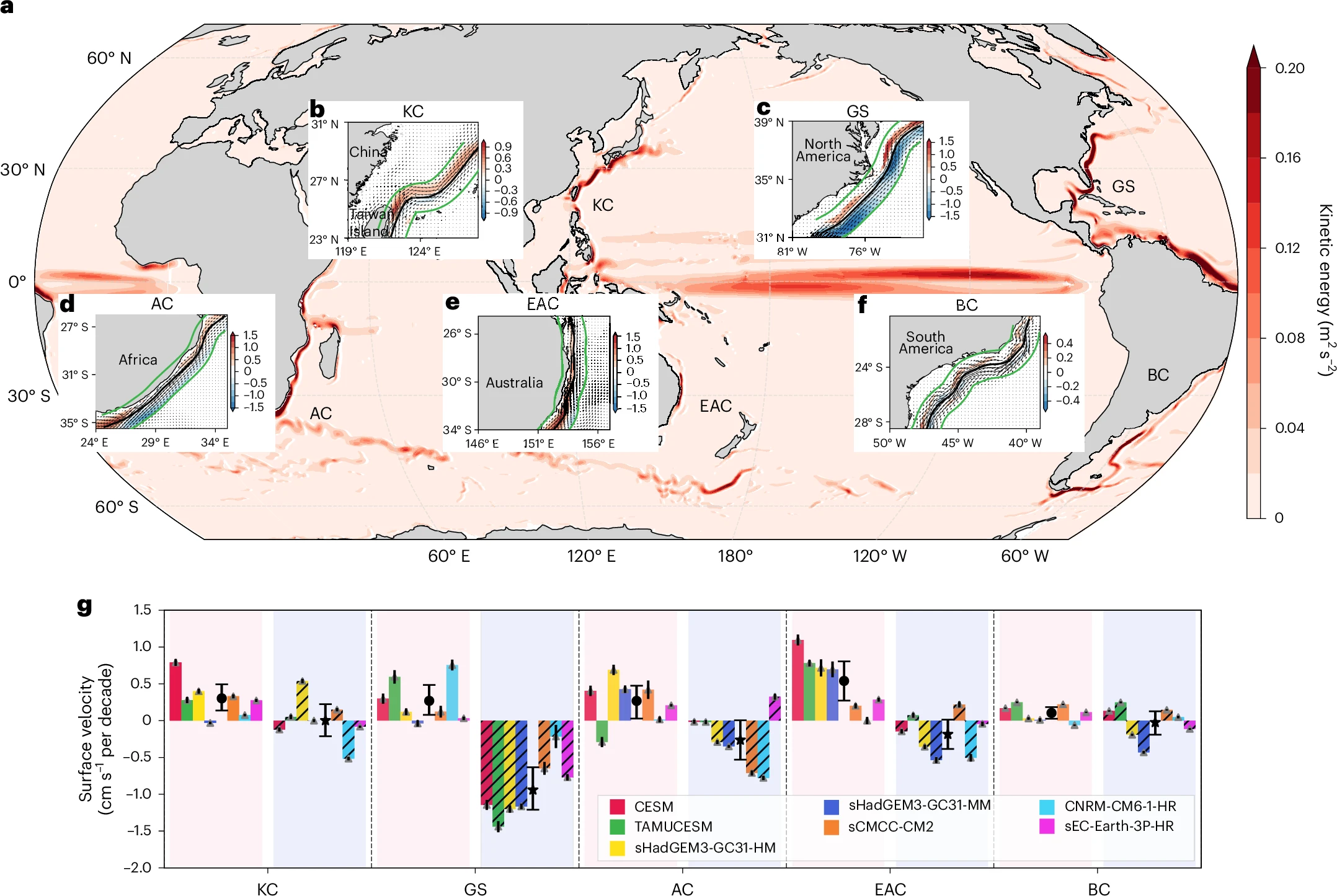Onshore intensification of subtropical western boundary currents in a warming climate
Haiyuan Yang, Haihong Guo, Zhaohui Chen, Wenju Cai, Lixin Wu, Jinzhuo Cai, Tao Geng, Zhao Jing, Bolan Gan, Xiaohui Ma & Yingying Wang
Published in Nature Climate Change, February 2025
Subtropical western boundary currents (WBCs) refer to swift narrow oceanic currents that flow along the western edges of global subtropical ocean basins. Earlier studies indicated that the WBCs are extending poleward under a warming climate. However, owing to limited observations and coarse resolution of climate models, how greenhouse warming may affect the zonal structure of the WBCs remains unknown. Here, using seven high-resolution climate models, we find an onshore intensification of the WBCs in a warming climate. The multimodel ensemble mean of onshore acceleration ranges from 0.10 ± 0.08 to 0.51 ± 0.24 cm s−1 per decade over 1950–2050. Enhanced oceanic stratification associated with fast surface warming induces an uplift of the WBCs, leading to the projected change. The onshore intensification could induce anomalous warming that exacerbates coastal marine heatwaves, reduces ability of the coastal oceans to absorb anthropogenic carbon dioxide and destabilizes methane hydrate stored below the sea floor of shelf regions.

Fig. a, Time–mean kinetic energy of surface current in the global ocean based on the ensemble mean of seven high-resolution climate models from 1950 to 2050. b–f, Linear trends of surface velocity (cm s−1 per decade) of five subtropical WBCs: KC (b); GS (c); AC (d); EAC (e); and BC (f). The colour shadings indicate regions that are statistically significant above the 95% confidence level. The solid black lines are the current axes (section ‘The axes of WBCs and onshore/offshore trends’ in Methods). The black arrows indicate the current vectors. The green lines enclose the 1° band on both sides of the axis. g, Magnitude of the velocity trend averaged over the 1° band on the onshore (colour shading) and offshore (line shading) flanks of five WBCs in different models. The black line on each bar represents the error bar based on 1,212 samples for each model and the respective WBC. The grey triangle indicates the trend in each model. The black circles (stars) denote the multimodel ensemble mean on the onshore (offshore) side of WBCs based on seven samples, while the error bars indicate the intermodel spread based on 95% confidence intervals estimated by a bootstrap method. The onshore intensification of WBCs is expected in a warming climate, as indicated by a consensus of all seven available high-resolution climate models.
Yang, H., Guo, H., Chen, Z. et al. Onshore intensification of subtropical western boundary currents in a warming climate. Nat. Clim. Chang. 15, 301–307 (2025). https://doi.org/10.1038/s41558-025-02258-5